
The Sky Tower is a telecommunications and observation tower in Auckland, New Zealand. Located at the corner of Victoria and Federal Streets within the city's CBD, it is 328 metres (1,076 ft) tall, as measured from ground level to the top of the mast, making it the second tallest freestanding structure in the Southern Hemisphere, surpassed only by the Autograph Tower in Jakarta, Indonesia, and the 28th tallest tower in the world. Since its completion in 1997, the Sky Tower has become an iconic landmark in Auckland's skyline, due to its height and design. It was the tallest freestanding structure in the Southern Hemisphere from 1996 to 2022.

The University of Auckland is a public research university based in Auckland, New Zealand. The institution was established in 1883 as a constituent college of the University of New Zealand. Initially located in a repurposed courthouse, the university has grown substantially over the years. As of 2024, it stands as the largest university in New Zealand by enrolment, teaching approximately 43,000 students across three major campuses in central Auckland.

New Zealand Parliament Buildings house the New Zealand Parliament and are on a 45,000 square metre site at the northern end of Lambton Quay, Wellington. From north to south, they are the Parliamentary Library building (1899); the Edwardian neoclassical-style Parliament House (1922); the executive wing, called "The Beehive" (1977); and Bowen House. Currently, an additional building for housing Members of Parliament is under construction, which is expected to be completed in 2026. Whilst most of the individual buildings are outstanding for different reasons, the overall setting that has been achieved "has little aesthetic or architectural coherence".

Sir Frederick Miles Warren was a New Zealand architect. He apprenticed under Cecil Wood before studying architecture at the University of Auckland, eventually working at the London County Council where he was exposed to British New Brutalism. Upon returning to Christchurch, and forming the practice Warren and Mahoney, he was instrumental in developing the "Christchurch School" of architecture, an intersection between the truth-to-materials and structural expression that characterised Brutalism, and the low-key, Scandinavian and Japanese commitment to "straightforwardness". He retired from Warren and Mahoney in 1994 but continued to consult as an architect and maintain his historic home and garden at Ohinetahi.

Sir Ian Charles Athfield was a New Zealand architect who designed distinctive and innovative houses that challenged suburban norms, as well as celebrated commercial, public and institutional projects. He was born in Christchurch and graduated from the University of Auckland in 1963 with a Diploma of Architecture. That same year he joined Structon Group Architects, and he became a partner in 1965. In 1968 he was a principal partner in setting up Athfield Architects with Ian Dickson and Graeme John Boucher.

TheArts Centre Te Matatiki Toi Ora is a hub for arts, culture, education, creativity and entrepreneurship in Christchurch, New Zealand. It is located in the Gothic Revival former Canterbury College, Christchurch Boys' High School and Christchurch Girls' High School buildings, many of which were designed by Benjamin Mountfort. The centre is a national landmark and taonga as it is home to New Zealand's largest collection of category one heritage buildings with 21 of the 23 buildings covered by Heritage New Zealand listings.

Karangahape Road is one of the main streets in the central business district (CBD) of Auckland, New Zealand. The massive expansion of motorways through the nearby inner city area – and subsequent flight of residents and retail into the suburbs from the 1960s onwards – turned it from one of Auckland's premier shopping streets into a marginal area with the reputation of a red-light district. Now considered to be one of the cultural centres of Auckland, since the 1980s–1990s it has been undergoing a slow process of gentrification, and is now known for off-beat cafes and boutique shops.
The following lists events that happened during 1964 in New Zealand.

The University of Otago Registry Building, also known as the Clocktower Building, is a Victorian and later structure in the city of Dunedin, New Zealand. It stands next to the banks of the Water of Leith and is constructed from contrasting dark Leith Valley basalt and Oamaru stone, with a foundation of Port Chalmers breccia. The building houses the administrative centre of the university, and the office of the Vice-Chancellor. It has a Category I listing with Heritage New Zealand.
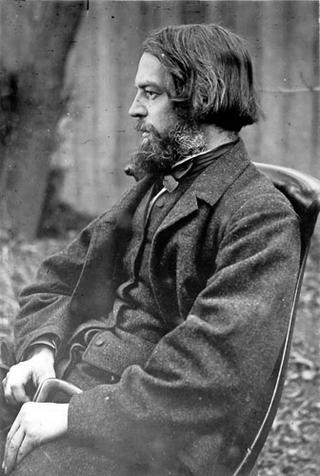
Benjamin Woolfield Mountfort was an English emigrant to New Zealand, where he became one of the country's most prominent 19th-century architects. He was instrumental in shaping the city of Christchurch's unique architectural identity and culture, and was appointed the first official Provincial Architect of the developing province of Canterbury. Heavily influenced by the Anglo-Catholic philosophy behind early Victorian architecture, he is credited with importing the Gothic revival style to New Zealand. His Gothic designs constructed in both wood and stone in the province are considered unique to New Zealand. Today, he is considered the founding architect of the province of Canterbury.
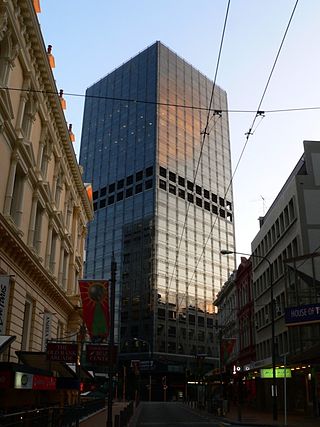
The Aon Centre is a commercial office building at 1 Willis Street in Wellington, New Zealand, formerly named the BNZ Centre then the State Insurance Building. When completed in 1984, it was the tallest building in New Zealand, overtaking the 87m Quay Tower in Auckland. It is notable for its strong, square, black form, in late International Style modernism, and for a trade dispute which delayed the construction by a decade. It remained the tallest building in New Zealand until 1986, when the 106 meter BNZ Tower opened in Auckland, and is currently the second tallest building in Wellington after the Majestic Centre.

Auckland City Hospital is a public hospital located in Grafton, Auckland, New Zealand. It is the largest hospital in New Zealand, as well as one of the oldest medical facilities in the country. It provides a total of 1,165 beds. It was established in 2003 as an amalgam of Auckland Hospital, Starship Hospital, Green Lane Hospital and National Women's Hospital. Public hospitals in Auckland have been run by Te Whatu Ora – Health New Zealand since 2022.
Architecture of New Zealand is the built environment of regions, cities and towns of New Zealand.

Smith & Caughey Ltd, trading as Smith & Caughey's, is a chain of two mid-sized, upscale department stores in Auckland, New Zealand.

The Dominion Museum building on Mount Cook in Buckle Street Wellington completed in 1936 and superseded by Te Papa in 1998 was part of a war memorial complex including a Carillon and National War Memorial.
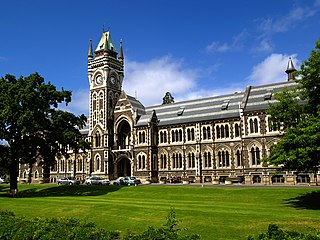
The University of Otago Clocktower complex is a group of architecturally and historically significant buildings in the centre of the University of Otago campus. Founded in Dunedin, New Zealand, in 1869, the University of Otago was the expression of the province's Scottish founders' commitment to higher education. They were also the inheritors of a strong architectural tradition and gritty determination. Defending the decision to build in expensive materials in an elaborate historicizing manner, the chancellor, Donald Stuart, said "the Council had some old-world notions and liked to have a university with some architectural style". This attitude persisted for over 50 years and resulted in an impressive group of buildings.

The New Zealand Institute of Architects Gold Medal is an award presented annually by the Te Kāhui Whaihanga New Zealand Institute of Architects (NZIA) to a New Zealand architect.
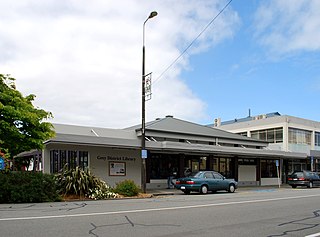
The Grey District Library, also known as the Greymouth Public Library, is a public library located in Greymouth in the West Coast region of the South Island of New Zealand.

Fergus George Frederick Sheppard was a New Zealand architect, who served as the chief government architect from 1959 until his retirement in 1971. During his time in this capacity he was involved with the design of the Beehive, among hundreds of other public buildings.
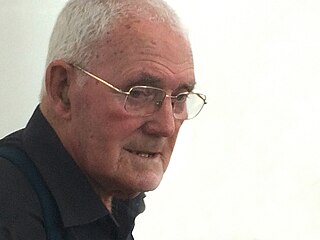
William Robert "Jim" Allen was a New Zealand visual artist. In 2015, he was named an Arts Foundation Icon by the Arts Foundation of New Zealand, an honour limited to 20 living people. Allen turned 100 years old in July 2022, and the occasion was marked by the Auckland Art Gallery with an exhibition of his works.























